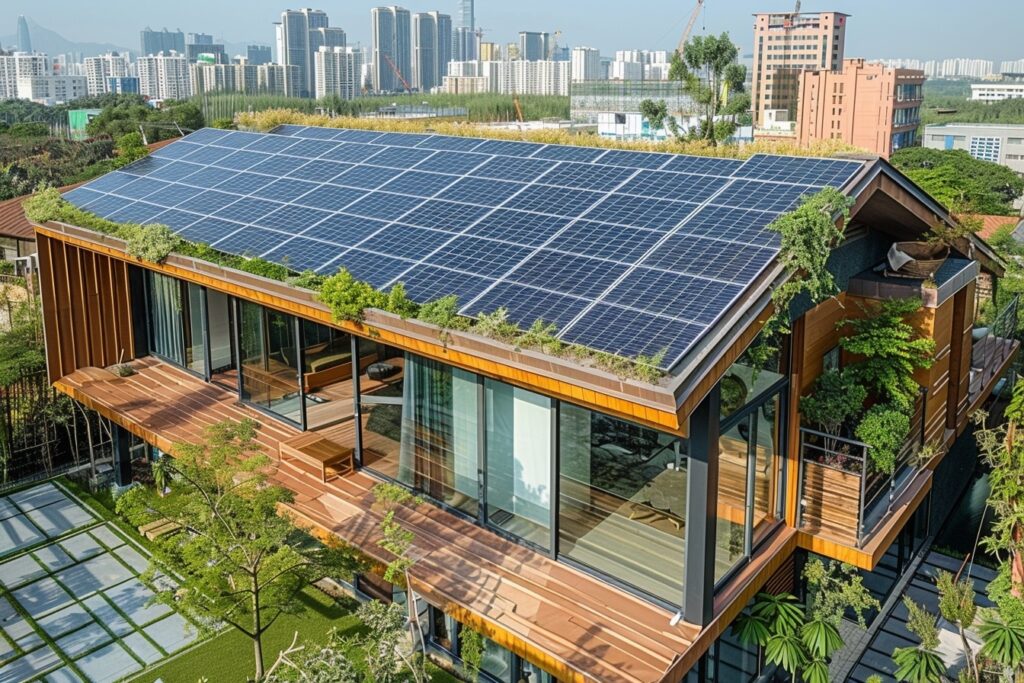
Innovative Affordable Housing Designs: A Vision for the Future
In today’s rapidly evolving world, finding affordable housing solutions has become an increasingly pressing issue. With urban populations on the rise and housing markets becoming more competitive, the need for innovative affordable housing designs is more crucial than ever. This article explores various aspects of these designs, highlighting their potential to revolutionize the housing sector.
The concept of innovative affordable housing designs is not just about creating cost-effective living spaces but also about ensuring sustainability, efficiency, and adaptability. These designs aim to meet the diverse needs of communities while minimizing environmental impacts and optimizing resource use. As we delve deeper into this topic, we’ll discover the myriad ways these designs are shaping the future of housing.

The Importance of Affordable Housing
Affordable housing is a fundamental human need. It provides stability, security, and a sense of belonging. Unfortunately, many people struggle to find housing that fits their budget, especially in urban areas. This gap in the housing market has driven the need for innovative solutions that can accommodate a growing population without compromising on quality or affordability.
According to a report from UN Habitat, sustainable housing is essential for the development of cities. Innovative designs play a critical role in achieving this by integrating modern technologies and materials that reduce costs and improve living conditions.
Key Features of Innovative Housing Designs
When discussing innovative affordable housing designs, several key features come to mind. These include:
- Sustainability: Using eco-friendly materials and energy-efficient systems.
- Flexibility: Designs that can adapt to different needs and preferences.
- Compactness: Maximizing space utilization to offer more with less.
- Community Integration: Promoting social interaction and communal living.
Exploring Sustainable Materials and Techniques
Sustainability is at the core of innovative affordable housing designs. By using materials that are both cost-effective and environmentally friendly, designers can create homes that are not only affordable but also reduce the carbon footprint. Techniques such as modular construction and prefabrication are becoming increasingly popular for their efficiency and sustainability.
Modular construction involves creating sections of a building in a factory setting before assembling them on-site. This method reduces waste and construction time, making it a cost-effective solution for affordable housing. Similarly, prefabrication involves manufacturing building components off-site, which can then be quickly assembled, reducing labor costs and environmental impact.
The Role of Technology in Housing
Technology plays a pivotal role in shaping innovative housing designs. Smart home systems, energy-efficient appliances, and advanced building technologies are just a few examples of how technology is transforming the housing industry. These innovations not only make homes more efficient but also enhance the quality of life for residents.
For instance, smart thermostats and lighting systems can significantly reduce energy consumption, leading to lower utility bills. Additionally, the integration of renewable energy sources, such as solar panels, can further decrease reliance on traditional power grids, promoting sustainability.
Community-Centric Housing Solutions
One of the most exciting aspects of innovative affordable housing designs is their focus on community. By creating spaces that encourage social interaction and collaboration, these designs foster a sense of belonging and support among residents. Co-living spaces, for example, offer shared amenities and common areas that promote a strong sense of community.
According to an article on affordable co-living solutions, shared living arrangements can significantly reduce housing costs while enhancing the social experience for residents. This model is particularly appealing to younger generations seeking affordable, flexible living arrangements.
Adapting to Urban Environments
Urban areas present unique challenges and opportunities for innovative housing designs. Limited space and high property values require creative solutions that maximize land use and minimize costs. High-density residential buildings, for example, can accommodate more people while using less land, making them an ideal solution for urban environments.
These designs often incorporate green spaces, rooftop gardens, and vertical gardens to enhance the living experience and provide residents with access to nature. Such features not only improve air quality but also contribute to residents’ overall well-being.
The Future of Innovative Affordable Housing
The future of affordable housing lies in the ability to adapt and innovate. As technology advances and societal needs evolve, designers and architects must continue to push the boundaries of what is possible. The integration of advanced materials, sustainable practices, and community-focused designs will be essential in shaping the future of housing.
One promising development is the rise of 3D-printed homes. This technology allows for the rapid and cost-effective construction of houses, making it a viable solution for affordable housing. With the potential to drastically reduce construction costs and time, 3D printing could revolutionize the housing industry.
Conclusion: Embracing Change and Innovation
In conclusion, innovative affordable housing designs offer a promising solution to the global housing crisis. By embracing new technologies, sustainable materials, and community-centric approaches, we can create living spaces that are not only affordable but also enhance the quality of life for residents. The journey towards innovative housing is ongoing, but the future looks bright as we continue to explore new possibilities and push the boundaries of design.

FAQ Section
What are the benefits of innovative affordable housing designs?
These designs offer numerous benefits, including cost savings, sustainability, and improved living conditions. By using eco-friendly materials and advanced technologies, they reduce environmental impact and enhance residents’ quality of life.
How do innovative housing designs address urban challenges?
Innovative designs maximize space utilization and incorporate green features to address urban challenges. High-density buildings and community-focused layouts help accommodate growing populations while promoting social interaction and environmental sustainability.
What role does technology play in affordable housing?
Technology is crucial in making housing more efficient and affordable. Smart home systems, energy-efficient appliances, and renewable energy sources reduce costs and improve the overall living experience for residents.
This article contains affiliate links. We may earn a commission at no extra cost to you.